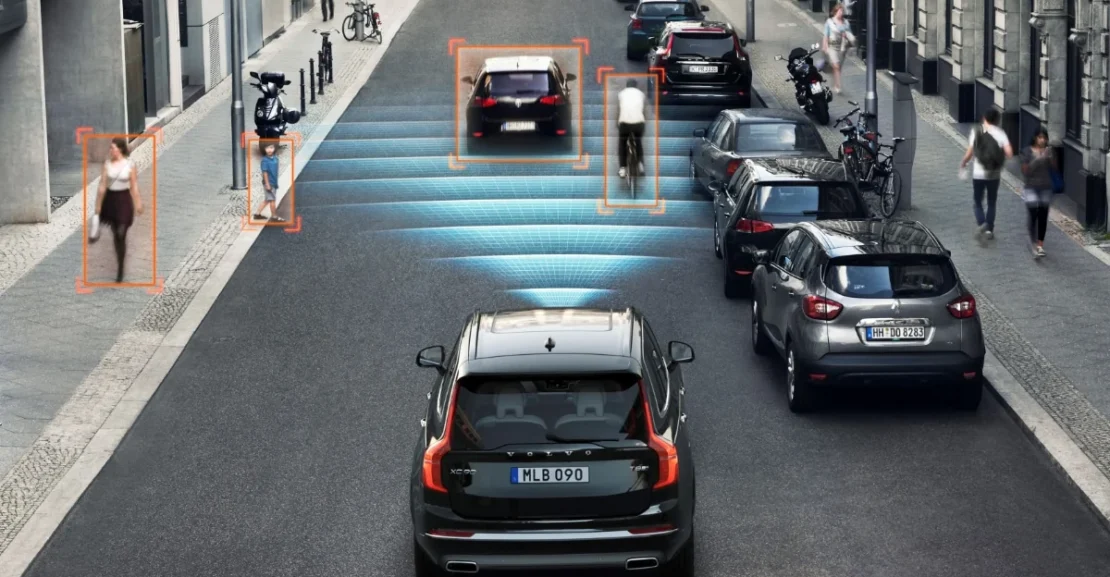WHAT DOES ADAS STAND FOR?
ADAS stands for Advanced Driver Assistance Systems, encompassing a range of technologies designed to enhance driver support and safety. Various ADAS types, including features like adaptive cruise control and automatic emergency braking, aim to assist drivers and mitigate the risk of collisions. These systems leverage advanced tools such as cameras, radar, LiDAR, vehicle-to-X communication, GPS, and mapping data to automate driving processes and contribute to overall travel safety.
EXAMPLES OF ADAS
In 2023, numerous automakers began offering Advanced Driver Assistance Systems (ADAS) as standard features in their vehicles. These systems are often bundled together under package names that may not explicitly outline the specific ADAS types they incorporate. Examples of such packages include Lexus Safety Sense, Chevy Safety Assist, Honda Sensing, Hyundai SmartSense, Lincoln Co-Pilot 360, Subaru EyeSight, and Toyota Safety Sense.
Typically, these ADAS packages encompass features such as adaptive cruise control, forward collision warning, automatic emergency braking, lane departure warning, and lane-keeping assistance. However, variations exist, and some packages, like Nissan Safety Shield 360, introduce additional elements such as a blind-spot warning with rear cross-traffic alert, with adaptive cruise control offered as an optional feature.
On a more advanced level, systems like Cadillac Super Cruise, Ford Active Drive Assist, and Tesla Autopilot represent Level 2 semi-autonomous driving technologies built upon standard ADAS foundations. These systems often incorporate enhanced adaptive cruise control, lane-centering technology, lane-changing assistance, and self-steering capabilities designed for use under strict driver supervision. The Mercedes technology, named Drive Pilot, is poised to bring Level 3 autonomy pending regulatory clearance.
CAN ADAS DRIVE FOR ME?
As of the close of 2023, autonomous driving is categorized into five levels, but only Level 1 and Level 2 systems have received approval for use in the U.S. In these approved systems, the driver is required to actively participate in driving or maintain close attention and be prepared to assume full control at any moment.
Even the most advanced Level 2 ADAS systems, which can steer without the driver’s hands on the wheel under specific conditions, demand constant driver attentiveness. The driver must be ready to take control whenever the system determines that it can no longer safely operate.
Looking ahead, the 2024 Mercedes-Benz S-Class has been designed to be capable of Level 3 and Level 4 autonomous driving once regulations permit. Tesla also anticipates expanding its autonomous driving capabilities as soon as it becomes legally feasible.
It’s important to note that features like watching movies or reclining the seat and dozing off are only possible in vehicles equipped with Level 5, fully autonomous self-driving capability. However, achieving Level 5 autonomy is considered a distant goal and is not expected to be realized soon.
WHICH CARS, SUVS, AND TRUCKS HAVE ADAS?
In the current automotive landscape, standard Advanced Driver Assistance Systems (ADAS) are increasingly common in new vehicles. However, the extent of technology can vary between models, even within a package like Hyundai SmartSense. It’s crucial to conduct thorough research to understand both the specific ADAS features included in the vehicle you intend to purchase and how they operate.
It’s worth noting that many new vehicles offer optional extra-cost packages that provide additional and advanced ADAS functionalities. For instance, the Mercedes-Benz Driver Assistance Package stands out, featuring enhancements such as Pre-Safe Plus, an automatic emergency stop assistance system, and route-based automatic speed adjustment reminiscent of Porsche InnoDrive, among other notable features.
To make an informed decision, potential buyers should be aware of the variations in ADAS offerings, both standard and optional, and consider the specific capabilities and technologies provided by these systems in the vehicles they are interested in.

